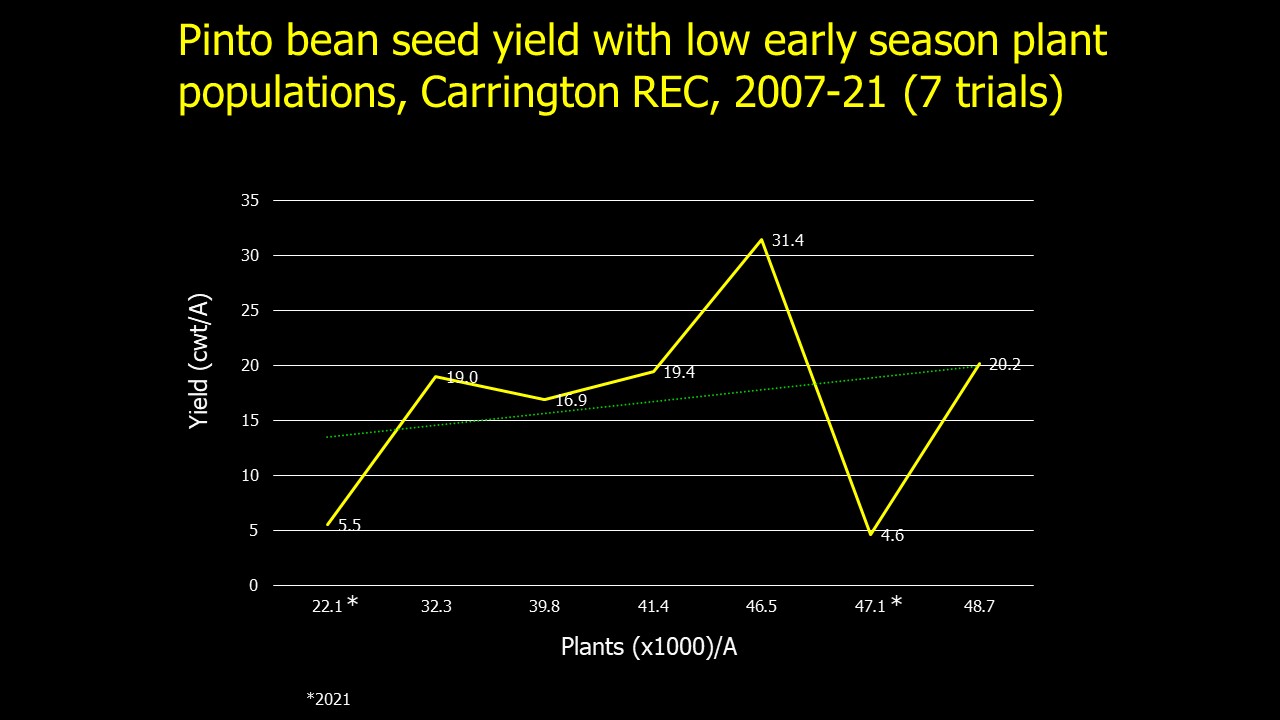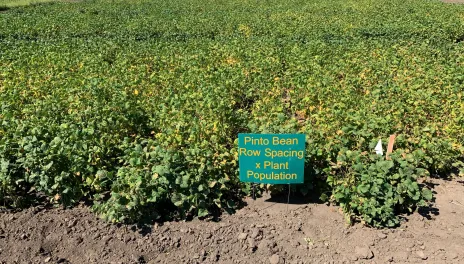Pinto Bean Plant Populations and Row Spacing
Recent NDSU production management research with pinto bean has included examining the interaction of increased plant population and reduced row spacing on yield compared the historical practice of establishing 70,000 plants per acre with 30-inch rows. North Dakota data from a 2021 dry bean grower survey (Knodel et al. 2022) indicate 55% of pinto bean were planted in row widths ranging from 11 to 25 inches compared to 40% grown in wide rows. In addition, the survey of North Dakota bean growers indicates 53% of pinto bean were planted at rates of 80,000 to 99,000 seeds per acre, with the likely goal of establishing greater than 70,000 plants per acre. During 2018-21, the Carrington and Langdon Research Extension Centers (REC), with financial support from Northarvest Bean Growers Association, conducted a field study comparing intermediate (18- or 21-inch) to wide (28- or 30-inch) row spacing plus targeted early-season plant stands of 50,000, 70,000 and 90,000 plants per acre.
Pinto bean seed yield, averaged across four site-years (2018-20 at Carrington and 2021 at Langdon), was statistically different among means of the two factor combinations (Table). Among plant populations, which averaged 49,900, 64,700 and 83,600 plants per acre, yield increased 15% to 19% with intermediate rows compared to wide rows. Highest yield was achieved with intermediate rows plus the medium and high plant populations. Yield was similar among plant populations with wide rows.
| Row spacing | 49,900 plants per acre | 64,700 plants per acre | 83,600 plants per acre |
|---|---|---|---|
| 18 or 21 inches | 1790bc lb/A | 1860ab lb/A | 1990a lb/A |
| 28 or 30 inches | 1500d lb/A | 1610cd lb/A | 1690bcd lb/A |
| LSD (0.05) | 200 | 200 | 200 |
Also, occasionally Carrington REC pinto bean trials have been established with relatively low plant populations. In the figure below, trials conducted during 2007-21 that had plant populations less than 50,000 plants per acre are displayed with corresponding seed yield. Two trials conducted during the extreme conditions of 2021 resulted in poor stands and low yield (4.6 and 5.5 cwt per acre). However, the remaining five trials, with plant populations ranging from 32,300 to 48,700 plants per acre, resulted in yield ranging from 16.9 to 31.4 cwt per acre. These data illustrate that reduced stands can result in adequate yield with proper management. Challenges with low plant populations include variable plant stages throughout the season (difficulty with timing of plant protection products and harvest) and weed management.

Greg Endres
Gregory.Endres@ndsu.edu
Extension Cropping Systems Specialist
